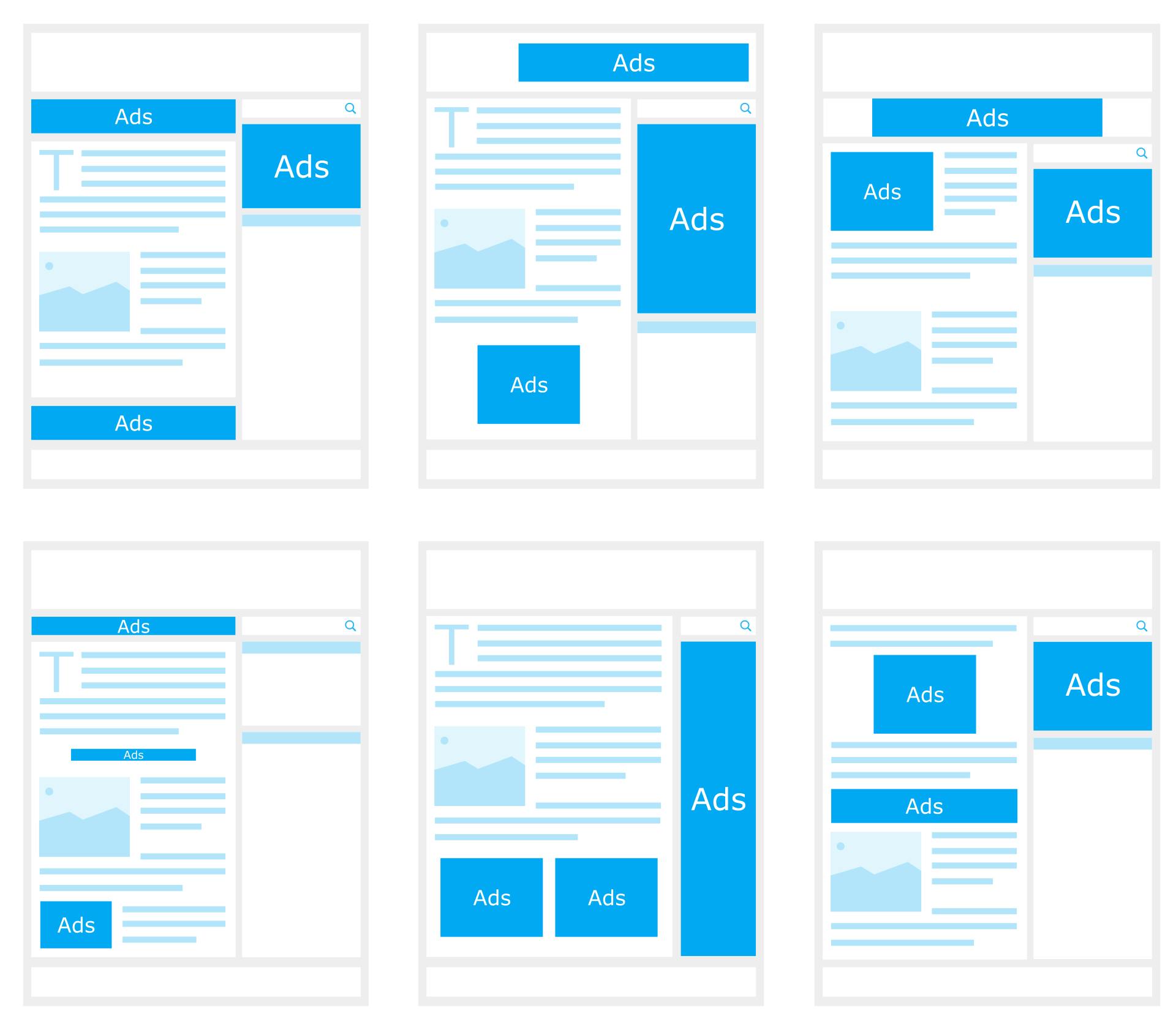Remarketing ads are online advertisements that target users who have previously interacted with your website. While regular ads attempt to drive new traffic, remarketing ads attempt to drive repeat traffic, which is often more valuable. It’s been said that a potential customer needs to interact with a brand an average of seven times before they convert, and remarketing is one way to facilitate these interactions. When potential customers see your brand in various places they will begin to subconsciously remember it.
Types of Remarketing Ads and Platforms
There are different kinds of remarketing ads to use depending on both your target audience and your product or service. Who are you targeting? And where can they be found online? These are questions you’ll need to answer in order to select the best platform to remarket on and the best type of ad. There are two main platform types you’ll come across: Google Ads and social media ad platforms.
Google Ads

When most people think of remarketing ads, they probably think of Google remarketing ads. These are the ads that follow you all around the internet. For example, if you look at a pair of shoes on a particular website, you may see ads for those shoes on a bunch of other websites you visit later that day. Those ads in particular are likely to be display or dynamic ads, which are two of the four categories of remarketing ads used by Google.
- Display ads are image-based ads that are served on third-party websites. They can either take the form of ad blocks or banners.
- Video ads are exactly what they sound like. These are ads that play before videos on Google and YouTube (which is owned by Google).
- Search ads are what you’ll see on the search engine results page (SERP) either above or below the organic results. Google has been changing how search ads are displayed recently, but for now, they’re denoted by a bold “Ad” label next to the listing.
- Dynamic ads are similar to display ads but include specific products or services which have been previously viewed by the user. The real difference between display and dynamic ads is how targeted they are. Using the example from earlier, display ads will probably show you shoes if you were previously browsing shoes. But display ads will show you the exact pair of shoes you were considering looking at on the advertiser’s site.
Social Media Ads

Basically, every social media platform has its own ads, including remarketing ads. Some of the major platforms are Facebook, LinkedIn, and Twitter, but which platform you choose should largely depend on where your target audience is located. Are your customers parents? Then Facebook may be your best choice. Looking to target professionals? LinkedIn will be your best bet. Is your audience on the younger side? Twitter could be a viable option.
But why would you ever choose social media remarketing ads over Google remarketing ads? After all, Google Ads are displayed far and wide across the internet, so there are more chances for more people to see them. It all comes down to the point of remarketing ads, which is to be highly targeted. When you remarket to someone, you want to be fairly certain that they’re going to convert in the end. And narrowing down your audience by platform demographics is one way to achieve this.
How Remarketing Ads Work
How does remarketing work? When a visitor enters your site or a specific page on your site, an anonymous browser cookie is attached to them which follows them around for a set amount of time. A browser cookie is a type of digital tag which follows users around the internet and serves as a trigger for specific events. This is how your ads are able to be served to visitors to your site after they leave.
Whether you set this cookie up to attach when your entire site is visited or just a specific page will depend on your goal. Are you trying to remarket a particular product or service, or your business as a whole? This is also when you’ll be able to decide if you want to target only people who already converted or those who failed to reach that stage. Perhaps you want to only target those who got far enough to add things to their shopping cart but abandoned them before making a purchase.
Once that’s been decided, you’ll have to select how long you want your ads to follow your site visitors around. Generally speaking, 30 to 60 days is a good range. Some platforms allow cookies to follow users for up to 18 months, but that’s probably never going to be a good idea. Why would you continue to target someone with ads if they haven’t expressed further interest in your product or service for a very long time? That’s just a waste of time and resources, which is why a shorter range is generally a better idea.
Benefits of Remarketing Ads

The main benefits of remarketing ads are that you can convert potential customers into customers and convert one-time customers into repeat customers. If someone has visited your site but didn’t convert, that doesn’t necessarily mean they aren’t open to the idea of converting. They’ve expressed some sort of interest in your product or service, and depending on how deep into your site they got, you can measure this level of interest. For many of these potential customers, all they need to convert is a little push, which remarketing can give.
Current customers — those who have already converted in the past — are usually safe bets for remarketing because you already know they’re willing to purchase your product or service. However, because they’ve converted in the past, they may not need your remarketing ads to convince them to convert again. Whether you target those who have already converted or those who have yet to convert will depend on what it is you’re selling as well as some trial and error.
Conclusion
There is a variety of remarketing ad types and platforms on which they can be used. The main two platform types are Google and social media, and which you choose will depend on where your audience is located — though you can also mix and match. Remarketing works by adding an anonymous cookie to the browsers of your visitors so that your ads can be served to them on third-party sites. The benefits of this include targeting people who have already expressed interest in your product or service, or who have converted in the past.
Remarketing with Media Proper
At Media Proper, not only do we design and develop high-quality websites, but we can help you promote your business online as well through SEO and digital marketing. Remarketing ads are just one way you can leverage the power of digital marketing to catch leads and give your potential customers that little push they need to convert. Contact us today to learn more about how we can help set your business up for online success.

